This blog will come as no surprise to those who have been on the receiving end of my unintentional, yet unavoidable, Lanzarote PR campaign!
The Canary Islands aren’t a place most people think of when it comes to food and we, believe it or not, like to keep it as one of our best kept secrets.
As with so many tourist spots, you only experience the authentic parts of the island when you head off grid and hang out with the locals. And of course, this involves knowing where to find the hidden gems. Having spent 30 years scouring the island and seeing how it’s changed over time, there are a handful of places which we simply must visit annually or face serious withdrawal symptoms.
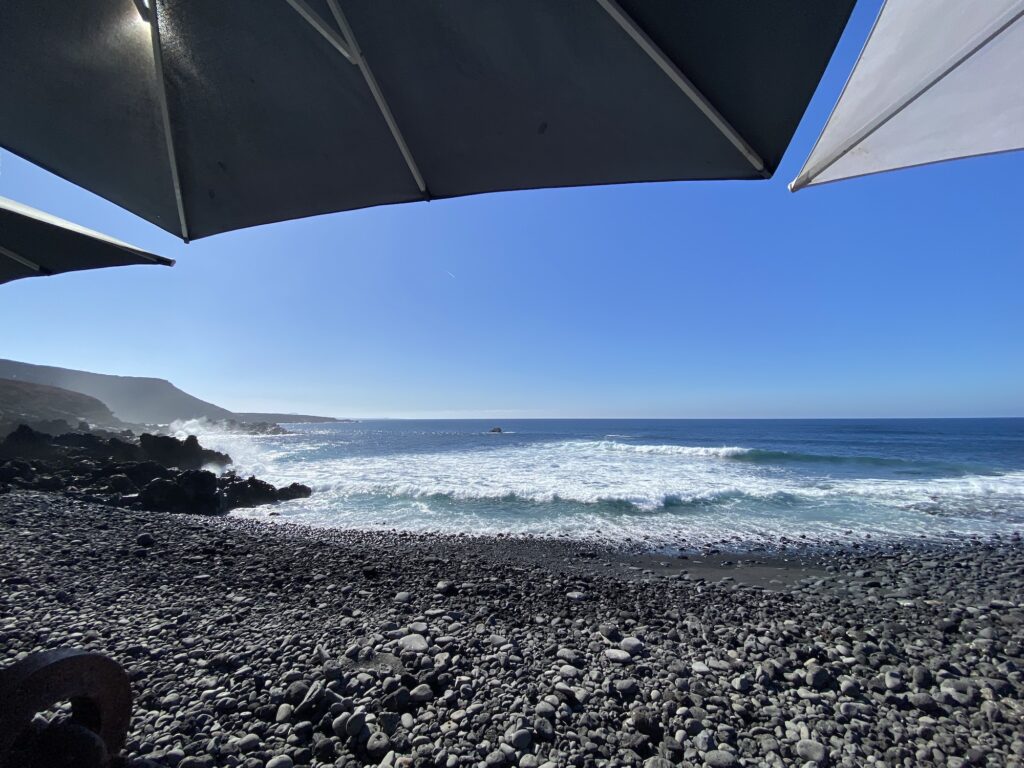
On the rugged western shores of Lanzarote, in the quiet fishing village of El Golfo, you’ll find a dish that’s as dark and mysterious as the volcanic landscape it sits on. It’s black squid ink paella, or paella negra, and it’s a reminder of how simple ingredients, done right, can be hard to beat.
Before we get into the paella itself, let’s talk about El Golfo, a place packed full of memories for my family and I. We first discovered it as kids, and now visit with our very own brood who spend hours scampering around in the rockpools at the front of the restaurant. My parents who live on the island for much of the year not far from El Golfo, are warmly welcomed into the restaurant by the owners as though they were locals themselves.
If the island of Lanzarote were a book, this village would be the dog-eared, forgotten chapter, full of untold stories and raw beauty. A tiny speck of civilisation, it sits on the edge of the world, where the ocean pounds against black volcanic cliffs. Its where green lagoons sit in the shadow of jagged rocks, and black sands stretch out before an expanse of sea. In short, it’s a place that doesn’t mess around. And neither does the food. It’s no surprise that this tiny fishing village has become a favourite for food lovers and a go-to lunch spot for local Spanish families.
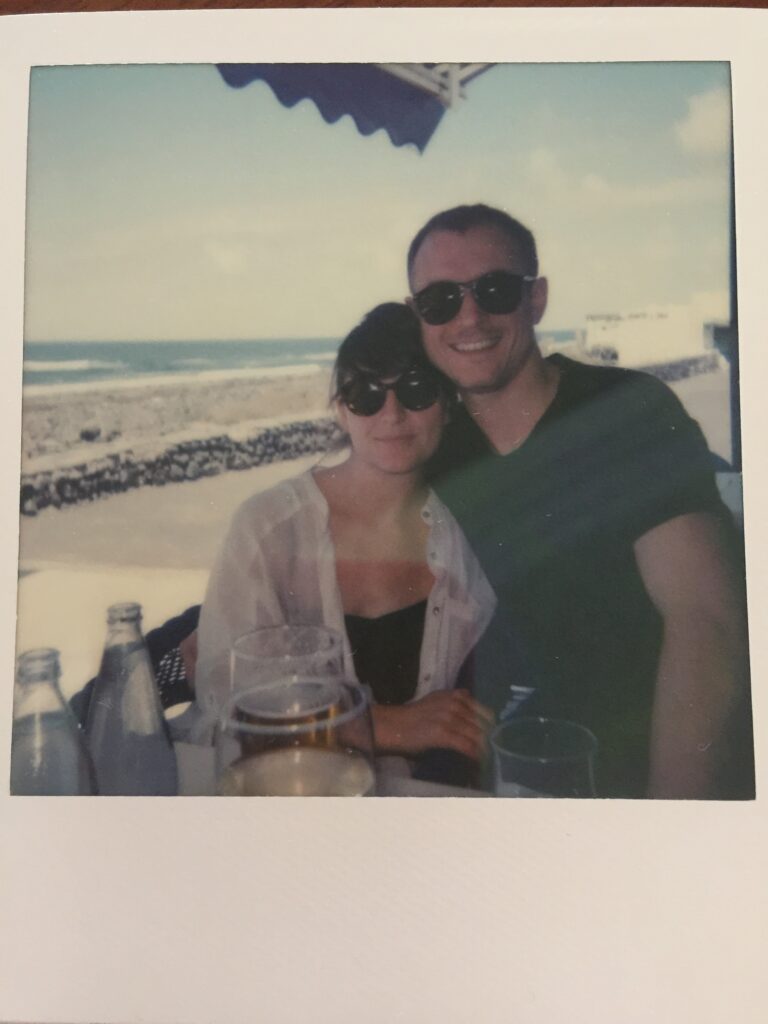


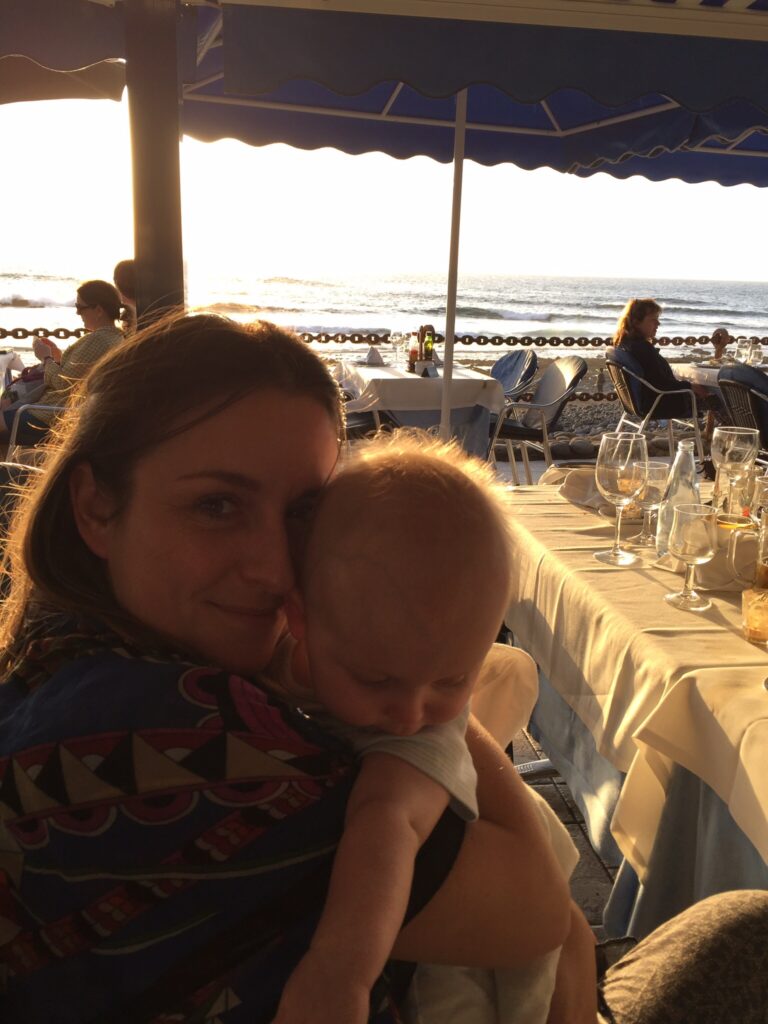
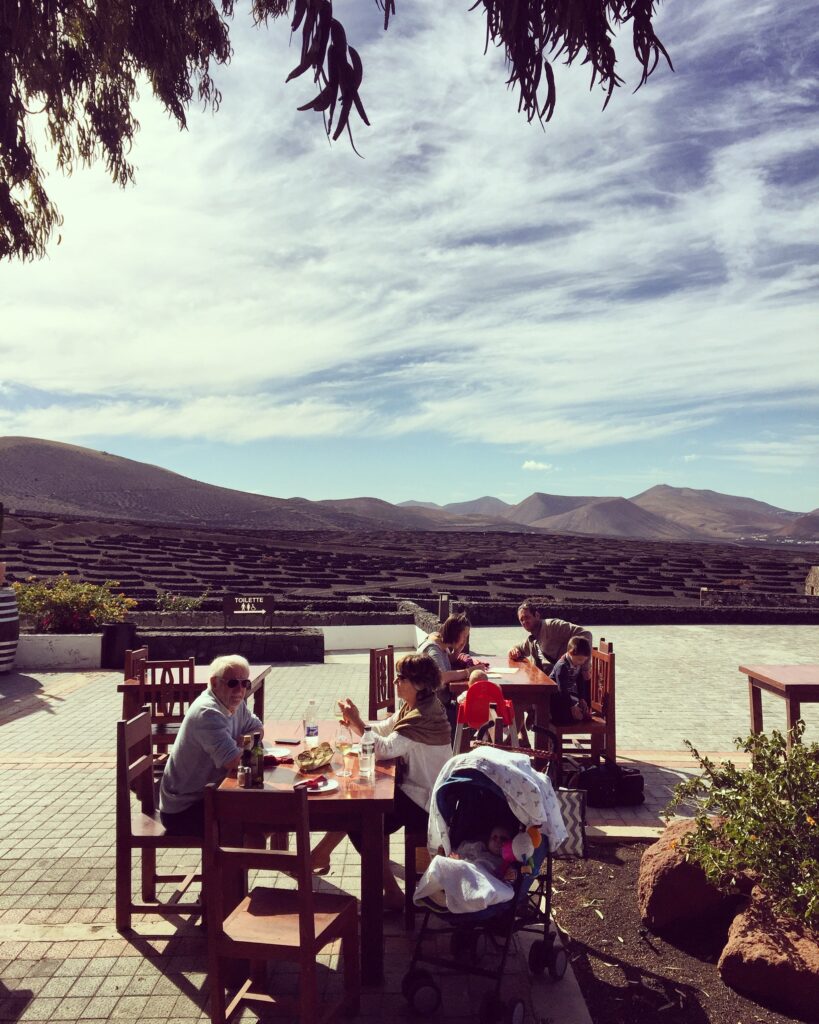
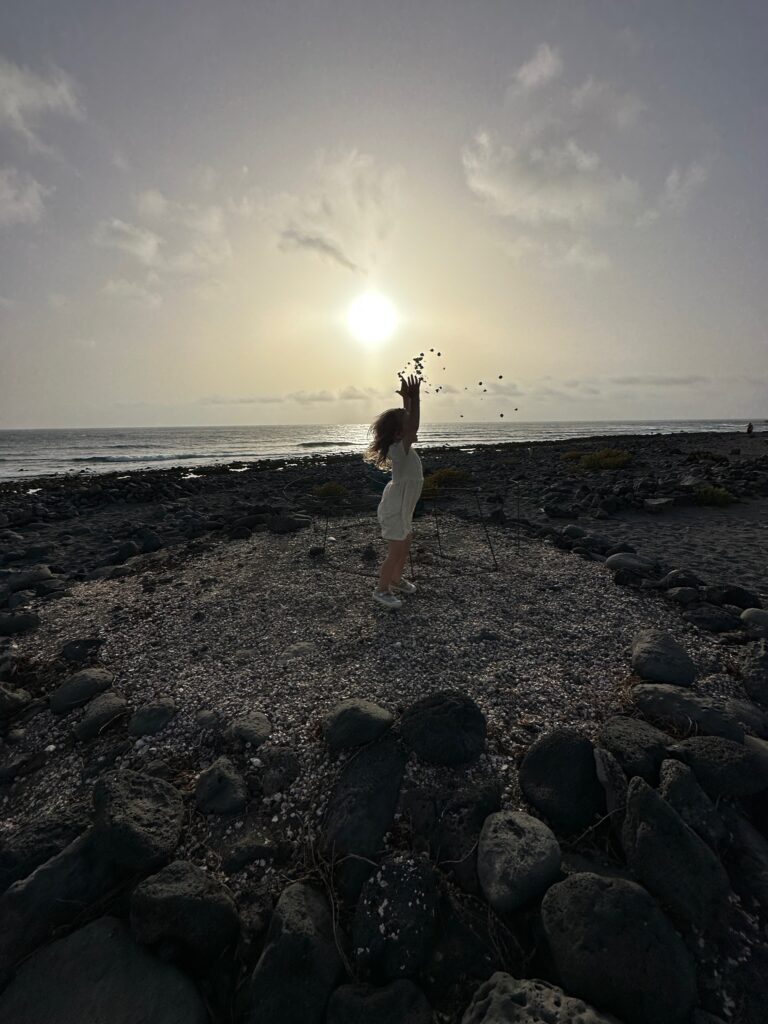
Paella negra is no tourist gimmick. It’s a reflection of Lanzarote itself: dark, intense, and unapologetically raw. It’s been said many times – I have grown to adore the extreme, contrasting landscape – but it is not for everyone!
This traditional dish, steeped in the rich maritime history of Spain, takes on a life of its own here. The seafood doesn’t come from a distant supplier; it’s caught fresh daily from the waters that surround the village and often you will see local fishermen haul their catch onto the rocks, straight into the kitchen. It’s that connection to the sea that makes the dish so distinct.
Like any good paella, it starts with a base of sofrito – finely chopped onions, garlic, and peppers, sautéed in olive oil until soft. Next comes the seafood. Anything from squid, prawns, octopus, clams, cuttlefish and mussels are added, then the squid ink is introduced – this is the moment when the dish transforms. Stirred into the seafood, the squid ink turns everything in the pan a rich, black hue.
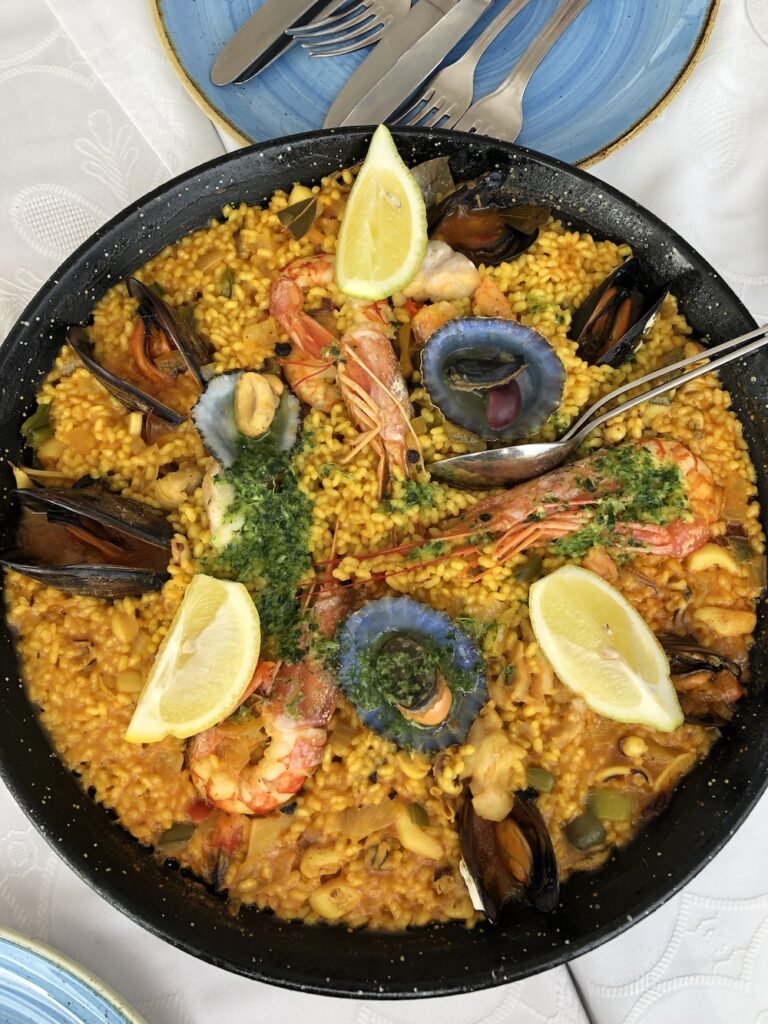
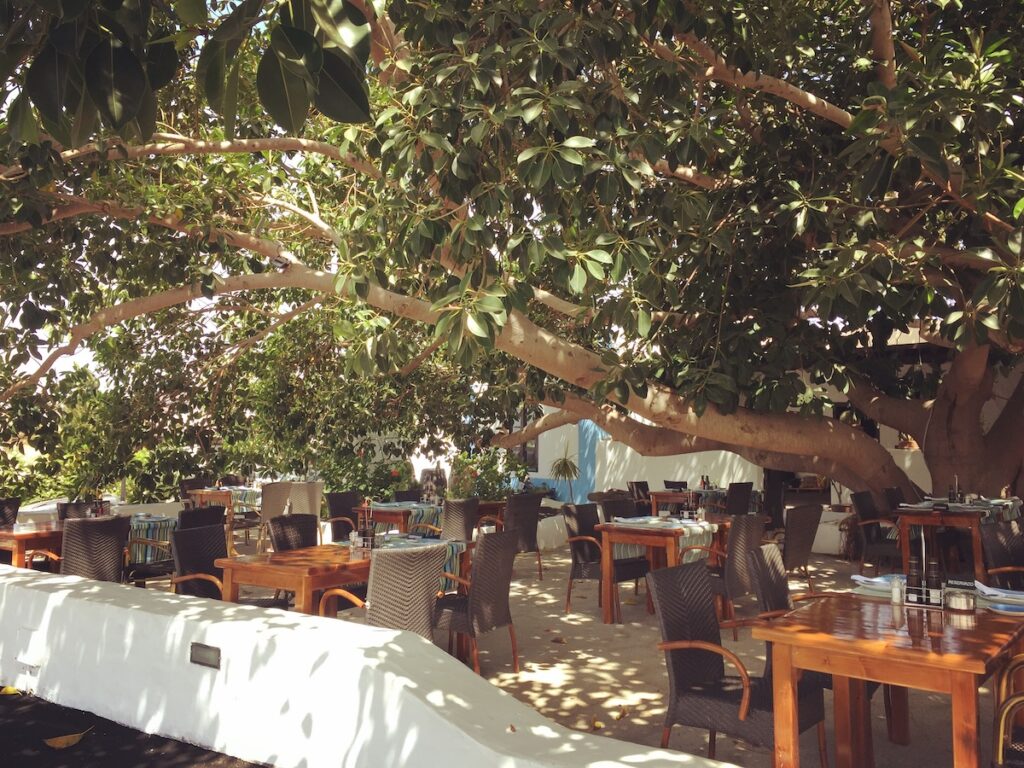
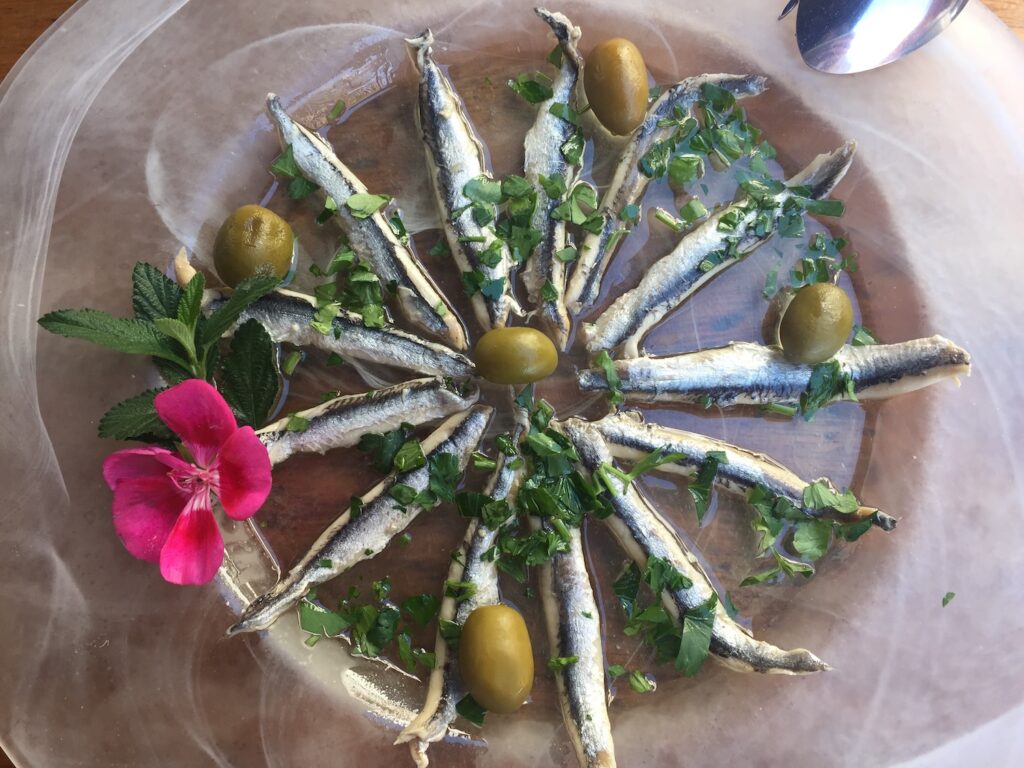
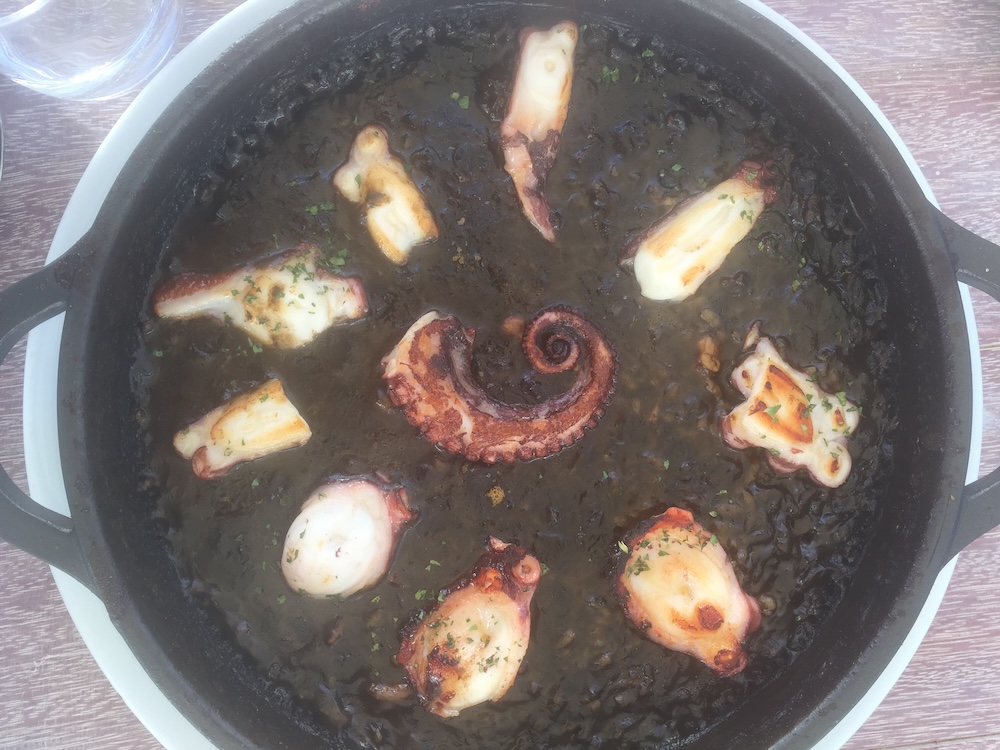
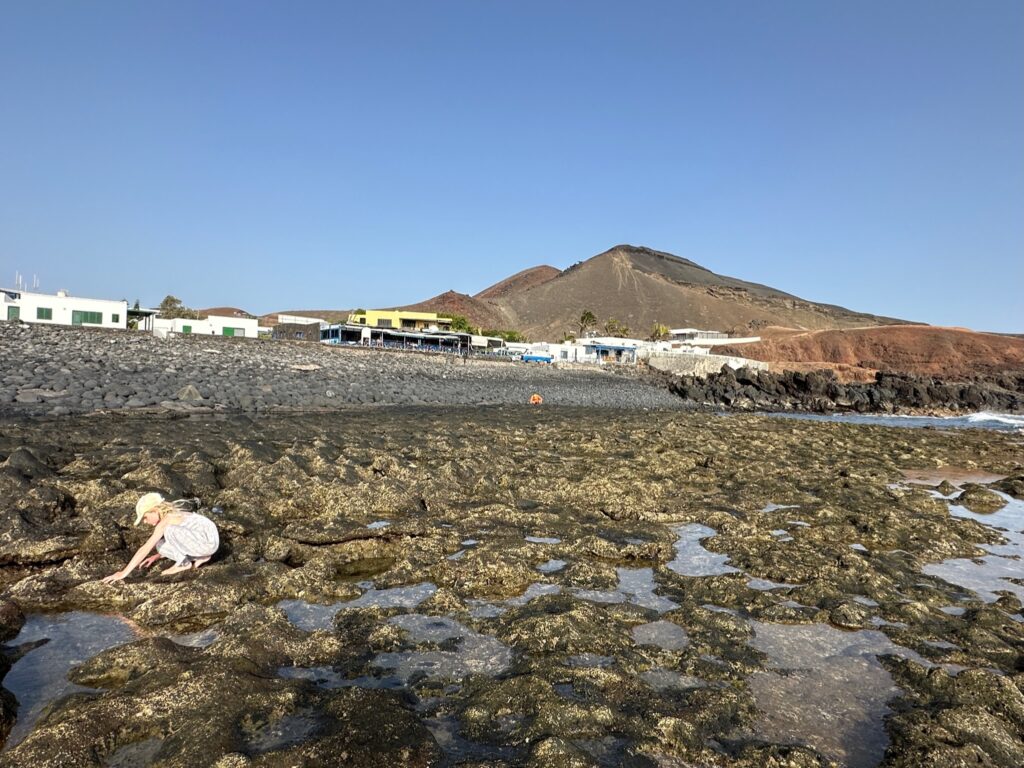
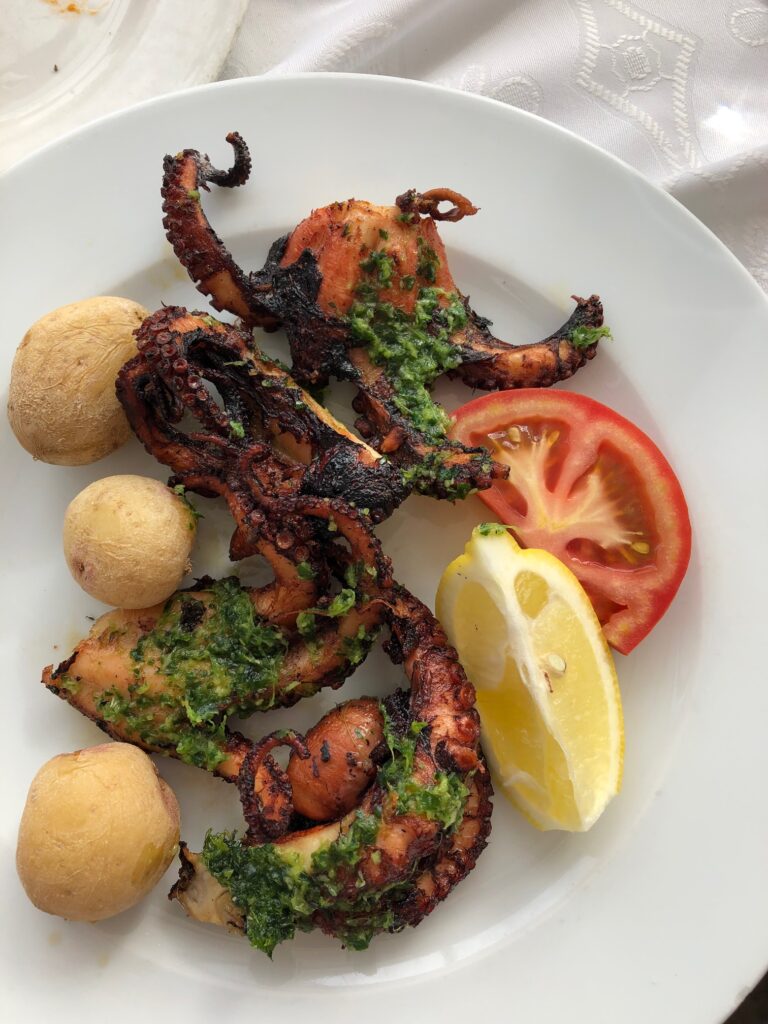
The short-grain rice – arroz bomba, the variety that’s traditional to Spain – follows. This rice is perfect for paella, as it absorbs the liquid without becoming mushy. The seafood stock, which has been simmered from the fish, is poured over the rice, followed by a splash of white wine to round out the flavours. The rice slowly absorbs the broth, taking in the ink. And then comes the socarrat, that crispy, slightly burnt layer of rice that forms at the bottom of the pan. If you’ve never had it, it’s the crackling edge of the dish, crunchy and flavourful, and well worth fighting over. Given this is a dish she has devoured since she was a baby and wants to eat the moment we step off the plane, my daughter Remi often wins the fight!
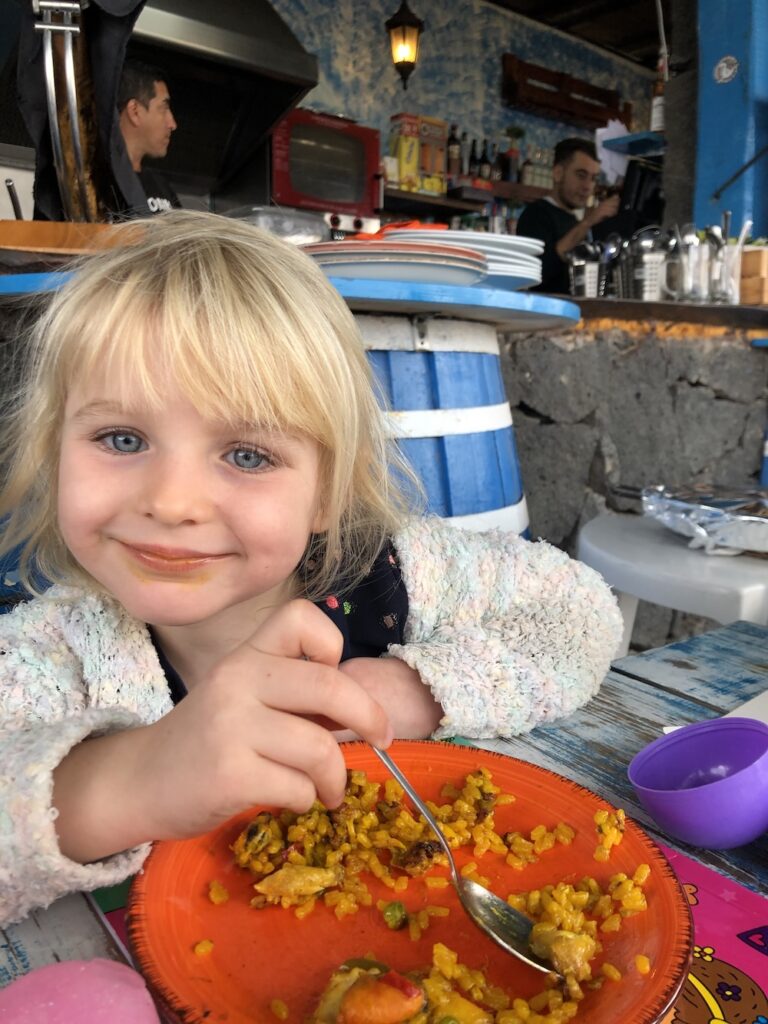
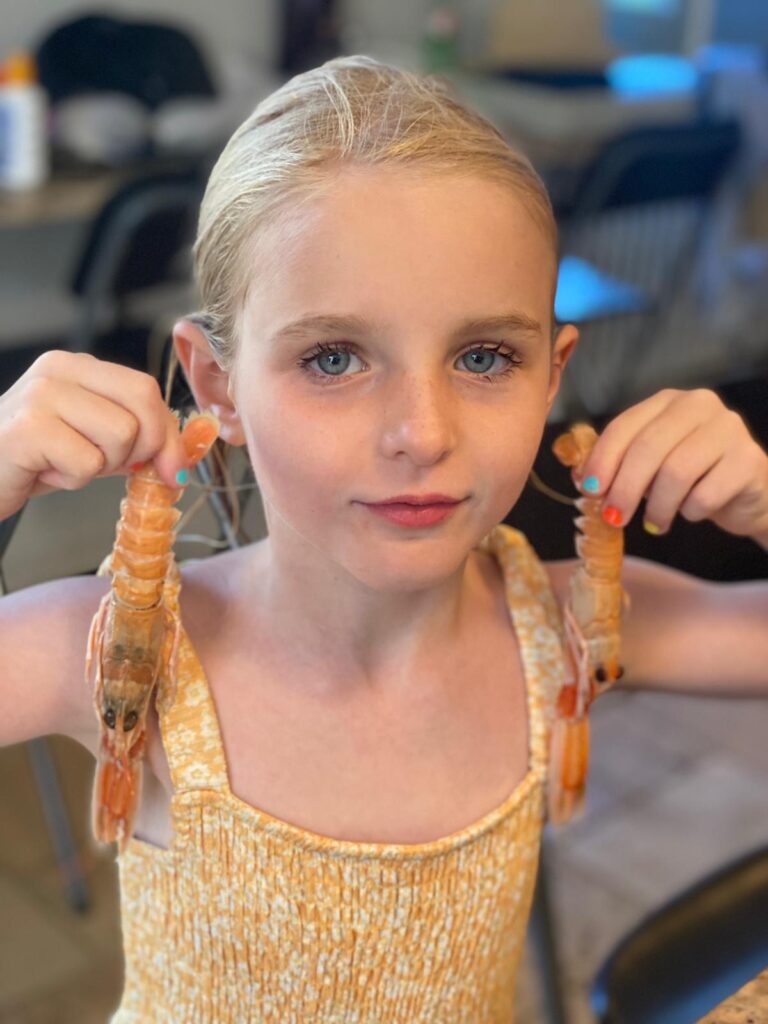
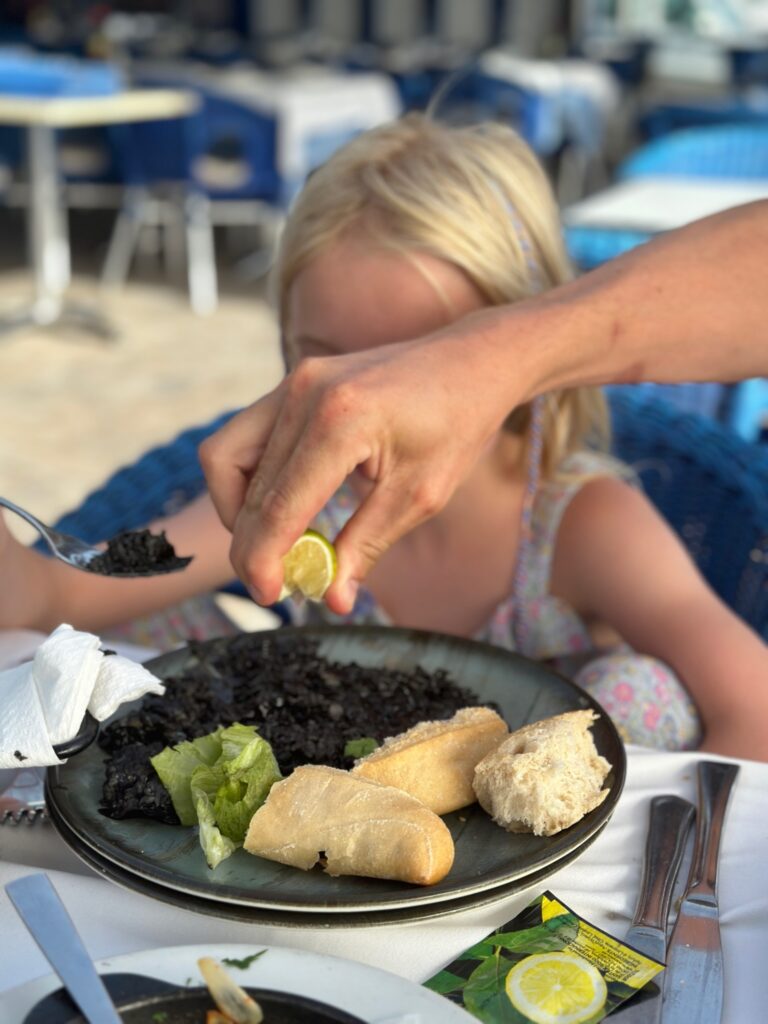
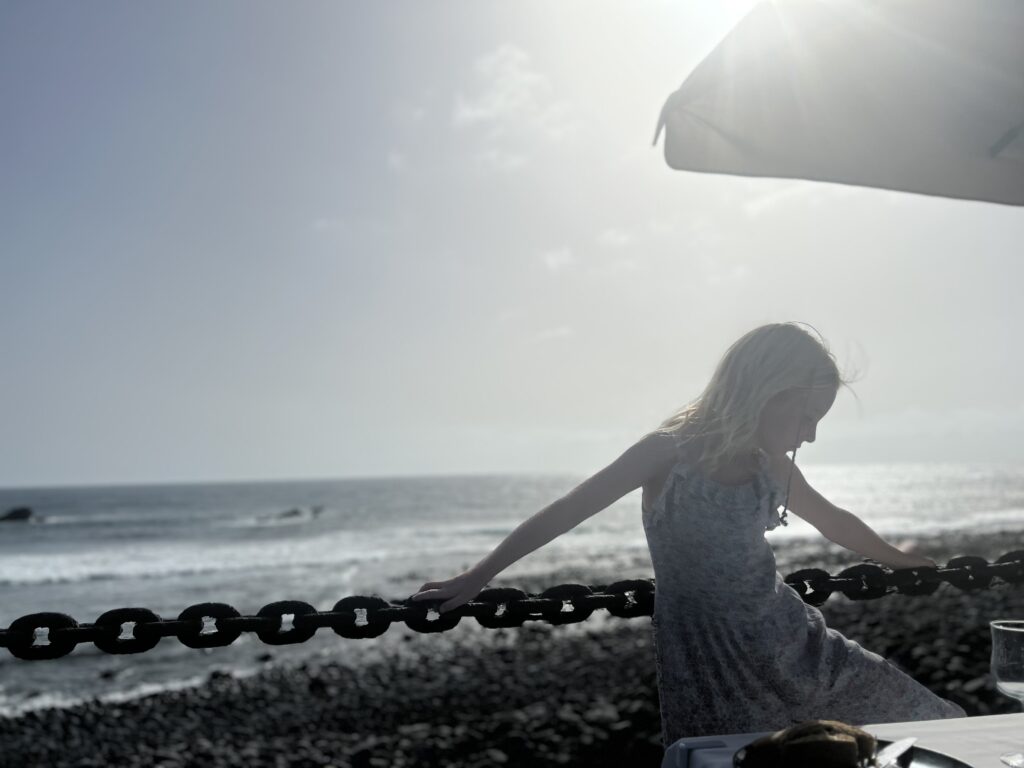
Of course, you can find black rice almost anywhere by the sea in Lanzarote, but here’s the thing about eating paella negra in El Golfo: it’s not just the food, it’s the whole experience. You’re sitting at a table with nothing but the vast ocean stretching out before you. If you’re lucky enough to snag a seat right at the edge of the terrace, usually saved for regulars, your view will be the island’s most dramatic volcanic coastline. On a windy day, the water is so close you can feel the spray, and the sound of waves crashing drowns out the hum of the busy restaurant. It’s overwhelmingly peaceful and intimidatingly wild all at once and is undoubtedly one of my special places in the world.

It goes without saying, if you ever find yourself on the island of Lanzarote and in need of some inspiration, I have a long list ready and waiting…

